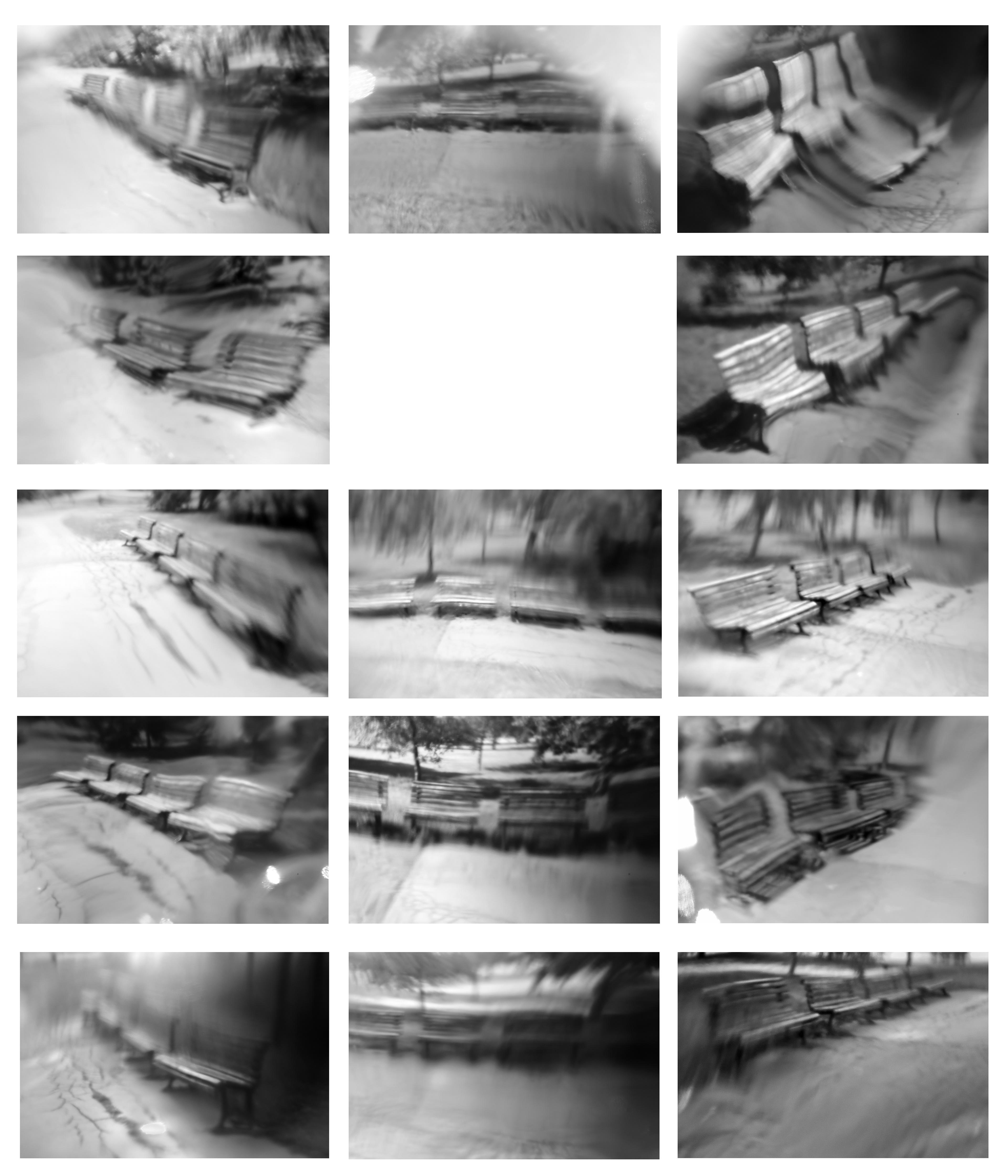Installation at ISODRIFT, Obejvák Project Space, Lihovarská 1060/12 Praha, 10 Sept. 2020
If the eye were not sun-like, it could not see the sun.
—Johann Wolfgang von Goethe, 1827
—Johann Wolfgang von Goethe, 1827
If the sun were not eye-like, it could not shine in any sky.
— Jakob von Uexküll, Bedeutungslehre, 1940
— Jakob von Uexküll, Bedeutungslehre, 1940
The benches featuring in this set of images — one solitary, three pairs, two triples and a quadruple — stand (sit?) along a network of crocodile-cracked asphalt paths in Letna park. Customarily I proceed unidirectionally along their route on a morning and return in the reverse direction late afternoon. However, stopping one day in July to consider the sun’s rotation charted by their shadows, I disrupted my one-way passage to and fro, and after one ‘to’ made an immediate return passage ‘fro’, before looping back again and continuing ‘to’. Thus circumperambulating the path thrice, deasil around its triangular loop, for luck, I took a photograph of each group of benches in turn as I approached, passed and departed them. The matter was complicated by the fact that I had taken to placing a bottle in front of the lens of my camera in order to make the benches more expressive of their inner state, and this involved no small amount of manipulation of the bottle, turn and turn about, quite aggravating all told, until the decisive moment finally came and the shutter was released. Add to which the optics of the bottle interacted with that of the lens in a way I still cannot fathom, making even a half-focussed image elusive. Thus struggling at every group of benches to manoeuvre the bottle and camera in a way sufficiently eloquent of their correspondence with the sun and current temper, a further difficulty lay in the fact that occasionally a person or persons unknown would be occupying a bench, sometimes sitting, sometimes reclining, and I was a little uncertain of the reception that would be given to the sight of my wrestling with camera and bottle nearby the bench in question. Eventually the person or persons might move on while I was taking an epicyclic detour, head inclined upward beholding the sky with curiosity and the like, but sometimes they remained obdurately glued to their seats. Consequently, I imposed the rule that a total of at most one hour would be dedicated to traversing the path three-fold in the manner described, any missing pictures being left as missed. As well my movement past the benches in my traversal of the path to and fro, recording for each my approach, passing and leaving, I wished to carry out the same procedure morning, noon and afternoon and thereby obtain a sequence of images with a group of benches as a fixed point and the implication of the sun’s circling around each of them, as traced by the movement of the benches’ shadows. In this way my circling round the path would be counterpointed by that of the sun around the bench (relatively speaking now the centre of rotation). Owing to the stubborn occupation of benches by certain persons – notably, a gentleman with round horn-rimmed spectacles took to the rightmost of one of the triple of benches each morning, due I surmise to the partial shade in which it lay at that time of day, taking out a book early on before removing the instruments of vision in order to lie supine eyes closed – it took five visits to achieve this goal, each visit involving the three-fold traversal of the paths to see the benches in approach, passing and past. (A sixth visit was abandoned due to clouds obscuring the sun.) Thus the most popular benches for whiling away time have fewer photographs: the absences here as it were represent presences.

I

II

III

IV

V

VI

VII


